November 11, 2021
Events
“Without data analysis and club algorithms, we would now be at a disadvantage.”
Sergio Llana, head of sport analytics at FC Barcelona, has described how the club has been adapting new technologies and methods of analysis to its operation. Today, although there is data coming from external companies, Barça applies algorithms to them that have been developed “handcraftedly” in the house to be able to obtain specific information about the club’s specific needs. Thus, it is possible to analyse open spaces in the field or measure possession with tracking data, fundamental aspects of the Barça DNA, without whose analysis, he noted, “now we would be at a disadvantage.” They are complex concepts of football that were previously impossible to identify and, facing tomorrow, the challenges lies in performing these same analyses, but in real time.
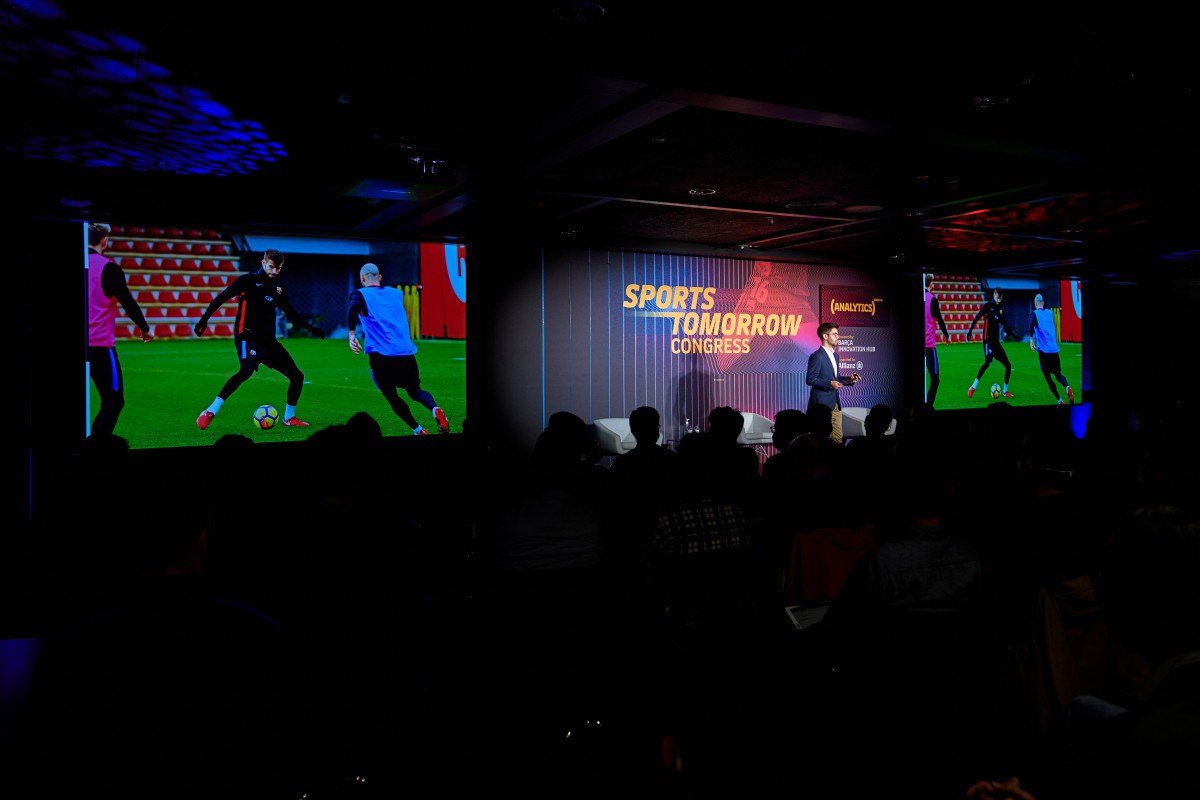
“There were people who told me that I wasn’t going to get anywhere, but I saw in the data that I was improving.”
The 5th edition of the Sports Tomorrow Congress of the Barça Innovation Hub has hosted a reunion between two former partners, Frenkie de Jong and Vosse de Boode, the head of data analysis at Ajax of Amsterdam. The football player has appreciated everything that the data has given him since he was in the training categories. They were used to compare their records and performance with those of previous seasons and to assess the evolution and improvement of their game. “There were people who told me that I wasn’t going to get anywhere, but I saw in the data that I was improving,” he said.
In this way, the data gave him a lot of confidence. Later, they even compared among colleagues. “We competed, because we wanted to be the best, sometimes the competition was with oneself.” Although he did not score goals, he recalled, the data allowed him to measure the leading role and the importance of his game: “Statistics helped me, you feel very flattered when you see that they compare you to the best.” He is now interested in the information he generates in both the training sessions and the matches at the Barça. This is where you can identify the margins of improvement you have and find out in which facets of the game you could have done something more.
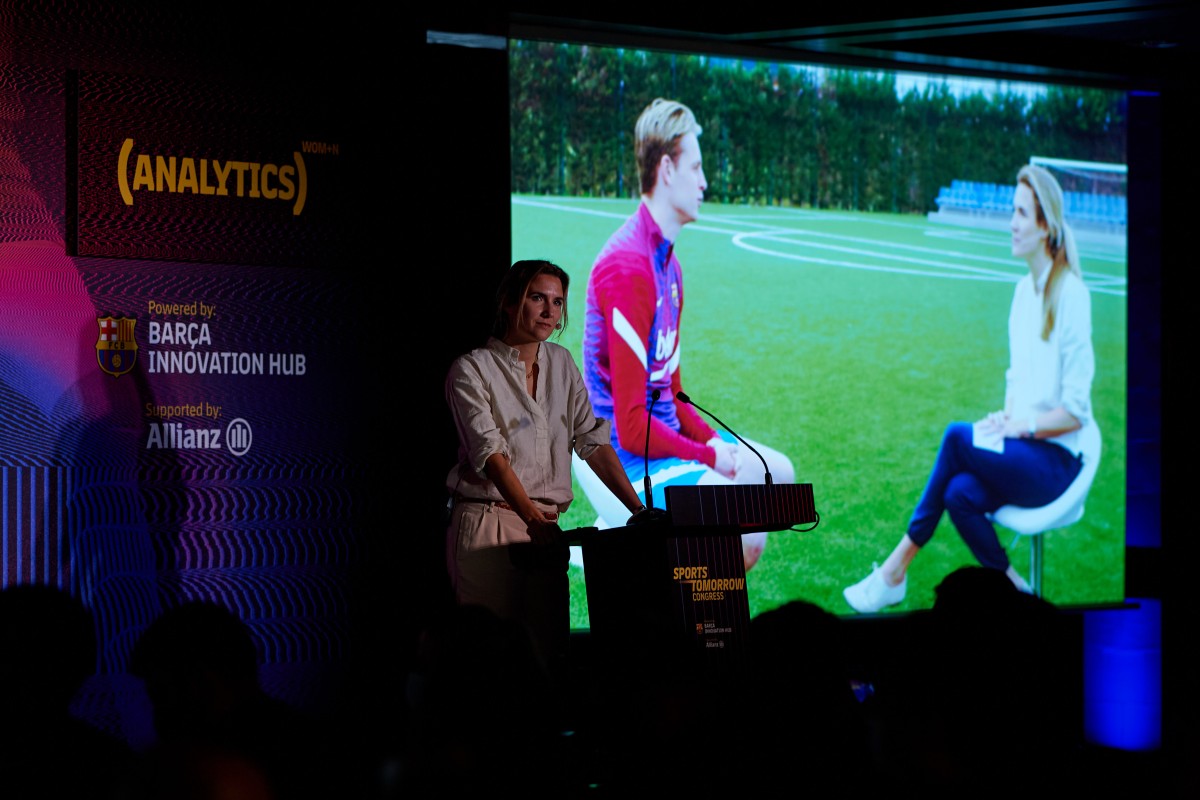
De Boode has underlined the importance of the data to convey confidence to the players, as has been proven with De Jong’s testimony. In the end, data show facts above feelings and they serve as “to open your eyes”. In the future, the analyst believes that they will be increasingly essential not only for their usefulness when it comes to having information to make decisions, but also for Generation Z, which are people who live a digital life, are inspired by information and are used to getting everything by just swiping their finger.
“The player has to understand that the data is theirs, that it belongs to them”
The basketball game has changed completely in the last ten years and the players and coaches have to adapt; to this end there is no other choice than to resort to the data, explained Marc Gasol together with Brittni Donaldson, the person responsible for data analysis for the Toronto Raptors. The player was fully aware of its importance after an injury in 2016. Thanks to the data, the club explained how he could recover. At first it seemed impossible, but he saw that with the participation of the medical team and the rest of the staff it worked.
When it comes to optimizing his performance, they explained to him what shots he should focus on and how he could get more involved in the attack. Donaldson revealed that Marc had a tendency to pass the ball when he could finish many plays. The analysts understood that these last passes were not necessary and showed it to him so that he could become more efficient. For Gasol, accessing this new form of knowledge was, above all, a way of mitigating stress. Previously, the failure was something that caused pressure, but when analysing the game with the perspective that the data gives, he understood that the failure is also part of the success and that there is no one without the other. “You have to make that mistake to make it right.”
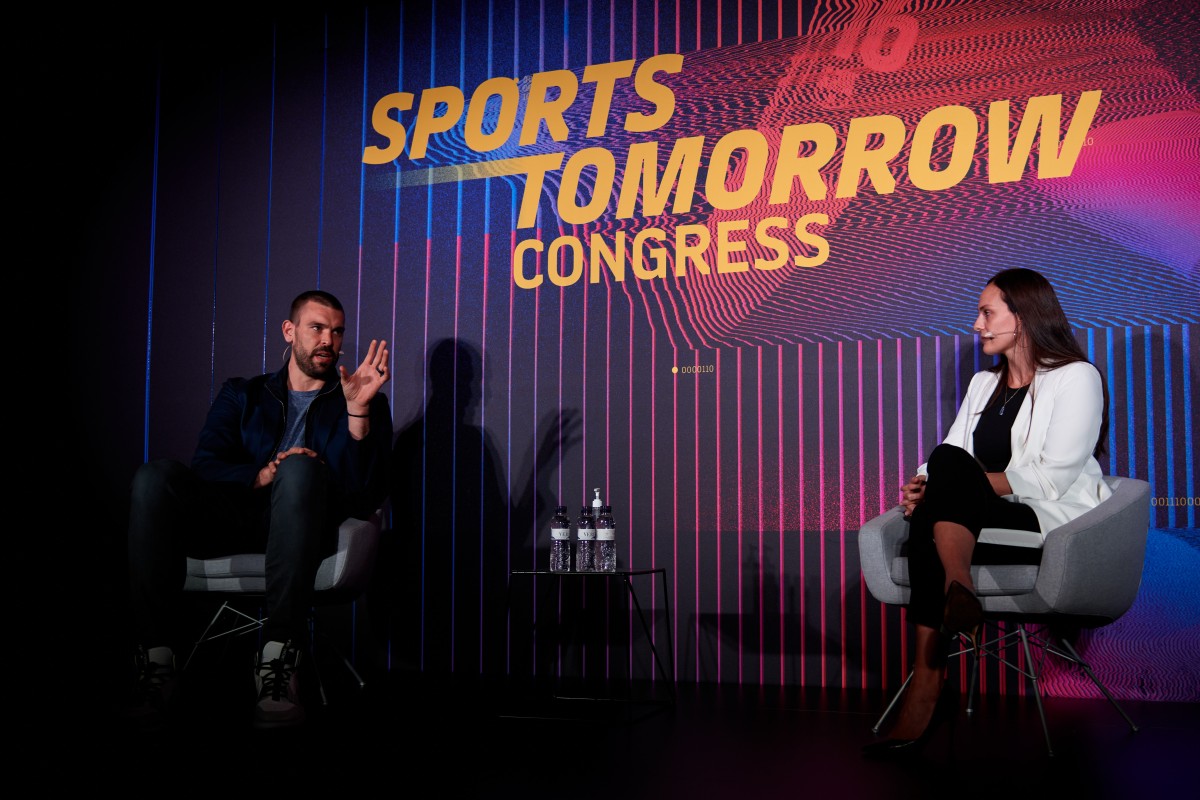
The fundamental thing, Gasol believes, is how data is presented to the player. You have to translate the numbers into images; “everything has to be very simple to understand; there are a lot of tensions, a lot of competition, stress; all that will always be there, but when all these factors are simplified, they help us make better decisions.” “Another issue is when coaches use the data to justify that they are not interested in a player who they do not like,” he complained, “what they do there is validating their own hypothesis.”
Therefore, “the important thing is that everyone is on the same wavelength, understanding the function of the data in the same way.” If there is something fundamental, it is to present the data well integrated; that is the key word, he noted, integration, so that those who have not used data do not find them as something aggressive. Donaldson, in this regard, has pointed out that it is necessary to educate players, because “when the brain looks under pressure, it tries to take shortcuts and the player, many times, when another quarter starts, forgets what happened in the previous one.”
If basketball has changed during these last few years, it will change more when youths join who have had great technological support to be able to improve their game. The important thing is to break down barriers, they said. It can also be “fun” for professionals to work with Artificial Intelligence to improve their game. “We professionals often fall into routines because they create security in a very unstable environment and you don’t want to change them because they give you that feeling of stability; what you want is to do is the thing that works, but if you want your career to be long, you have to continue reinventing yourself with the evolution of the game,” Gasol concluded.
“The better the performance of a player in a match, the more likely it is that he will kick a penalty towards his natural side.”
The penalty is one of the most decisive matches in a football game, not only during its development, but also in the ties that have to be decided in rounds. Lotte Bransen, from SciSports, has presented his investigation Predicting football penalty directions using in-march performance indicators, a method of prediction to try to find out in which direction there is more likelihood of a penalty being kicked if a player’s performance is addressed during the game.
His hypothesis was that a player who has played a good game would be more likely to throw in the direction of his/her natural leg (to the left if he/she is right-handed). To calculate their performance, the quality of the passes was measured. Two variables were introduced, the probability of marking before and after the pass. The result was that the higher the danger index created by a player, the more statistically significant his/her tendency was to shoot towards the natural side.
The only problem presented by the model is that at the beginning of a match it has not been possible to collect a volume of data that allows this relationship to be established. It is at the end of the match that it is easier to assess the correlation between both factors. Self-confidence is something that cannot be measured objectively. You should ask the player and count on his/her rating, but in this way a valid analysis of self-confidence is established if he/she relates to his/her game better or worse during that game.
“If we get closer to the concept of fatigue, we can optimize training methods”
Manuel Lapuente has presented his research Modelling Intermittent and fatigue profile of football competition with which he has tried to undertake different approaches to the concept of player fatigue. Currently, the physical intensity at which matches are played is evolving. At present, mental or cognitive fatigue cannot be measured, but with objective data on the physical load we can view “pieces of the puzzle”, explained Lapuente.
Distance travelled, sprints, acceleration and decelerations, metabolic power, all are common parameters for measuring performance, but Lapuente’s proposals go beyond this. To this end, he proposes to delve into the concept of intermittence. In other words, the intensity will be higher or lower depending on what the player has to do. As we know, football is a sport with many breaks or there are periods of reduced inactivity for players during matches, even if they are moving. To obtain a reliable assessment of fatigue from movement, he claims the algorithms of critical power and effort must be combined in order to ascertain that players perform at three levels: windows of 2 to 6 seconds, 30 seconds to one minute, and three to six minutes. With this framework, which can give an idea of the expenditure of physical energy, we begin to understand the concept of fatigue which is fundamental to optimise training methods.
“Qualifying the gains obtained with each pass is a variable that allows measuring the balance of risk in the game.”
Javier M. Buldú explains that football must be understood as a system. The data on its own doesn’t contribute anything, they only make sense when combined. That is, it’s the connection between the parts that makes the system work.
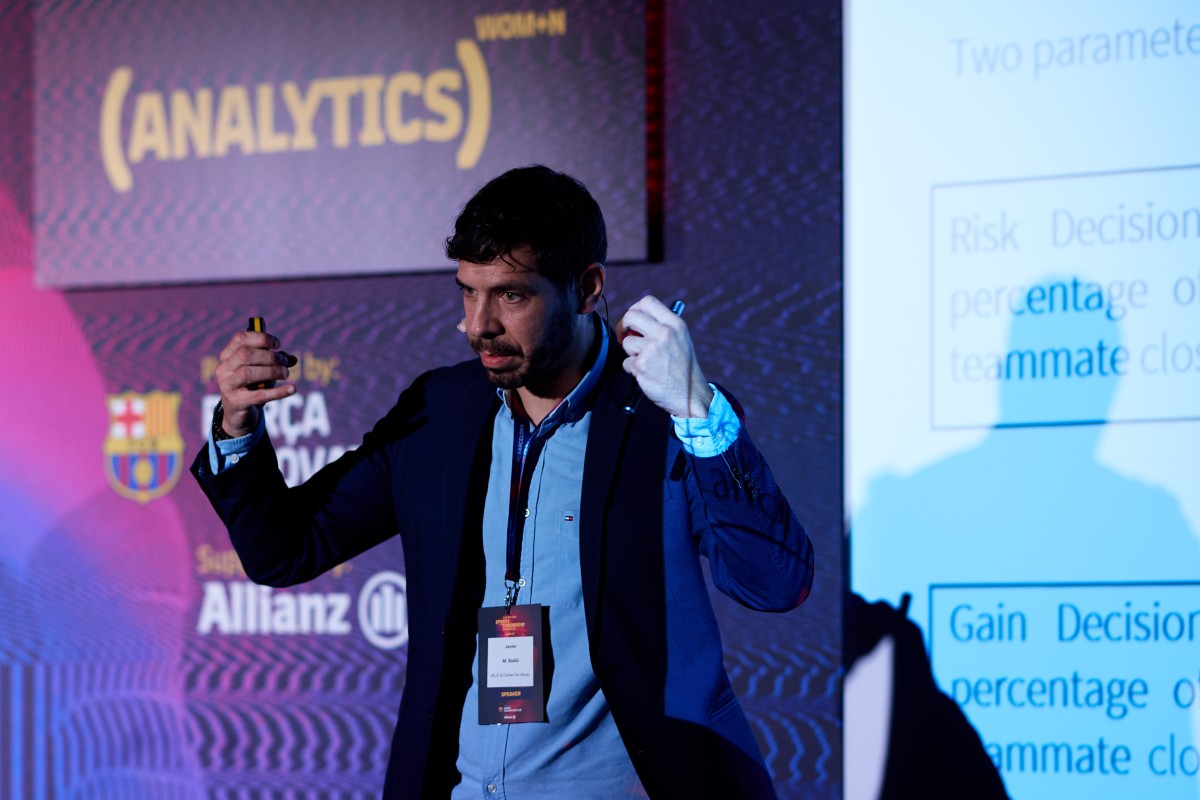
In this sense, the pass is the form of connection between the players. Hence, his research is based on evaluating when a player makes a valuable pass. Based on a tracking measurement, he has designed a method to measure the risk and benefit of each pass. Was there another option available, was it was a better pass? The objective is to be able to work on the modulation of risk to obtain a benefit. For example, if a team is winning a game and there is little time left, it’s in the team’s best interest to minimise risk, that would give a benefit. In this way, decisions can be made based on specific information.
“We have managed to get the goalkeepers to cover 43 centimetres more of the goal by conducting training designed with data.”
Finally, Rony Ibrahim won the award for best research paper at the V edition of the Barça Innovation Hub Sports Tomorrow Congress. His research Bridging the gap between biomechanical research and practice in training, the goalkeeper’s diving save was aimed at improving the movement of goalkeepers based on information obtained through data. The starting hypothesis was, can we establish new training methods for goalkeepers?
The analysis focused on the use of the legs to make saves and movements, as well as the positions they took before making saves. The angles of the knees were measured and the width of the stance was recorded according to the length of the leg. In addition, variables such as speed were introduced. As a result of the study, it was possible to identify which muscles contributed most to saving goals.
From here, twelve-week training sessions were scheduled with elite goalkeepers. There was a technical element, in addition to strengthening and conditioning. Tests were performed before and after the sessions in which the timing of saves were measured based on distance in order to make comparisons. Over those twelve weeks, improvements in saves of 0.008 seconds per metre were recorded, a 7.9% better standing position and an increase in the average speed of dive of 0.82 metres per second. All of these data translated to the ability to make better saves, showing that, for example, when saving a penalty, the goalkeeper covered 42 centimetres more. A distance that can be decisive.
“With data, FIFA wants to introduce a new football language”
Nicolas Evans, from FIFA, has explained the efforts the organisation makes to automate data collection worldwide. The goal is not to depend on people to be able to consult data. For the last three years, FIFA has relied on tracking to “introduce a new language of football”. Until now, the data was poor and the models were unreliable, but now they are working on identifying the speed of players and defining aspects of the game such as dribbling. He believes that they will soon be able to achieve an accuracy of more than 90%, “that it is better than nothing”, so that this technology is available for all under-17s. In the future, he predicts, “my children will play a game and will be able to extract all this data, that will make them better fans”.
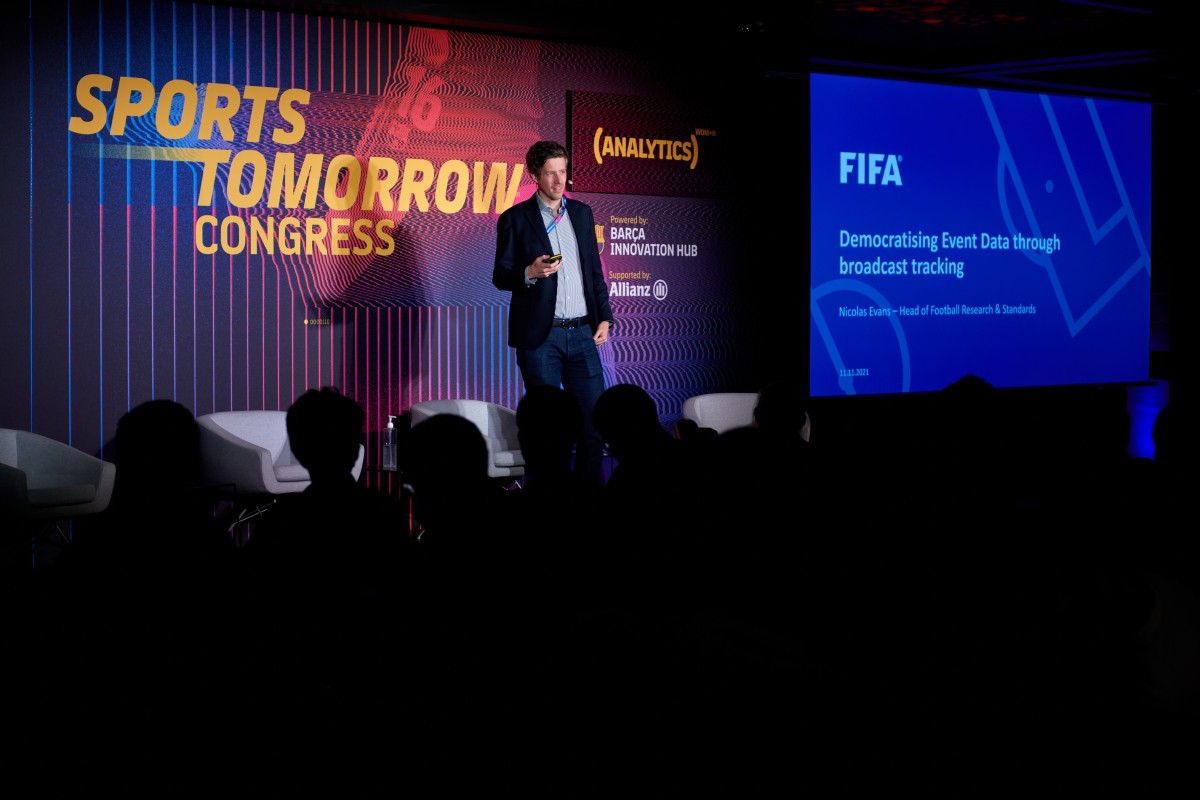
“If it’s not clear what to do with extracted data, it ends in failure.”
Susana Ferreras, Data Scientists for Arsenal, and Marco Benjumeda, of Olocip, have spoken with Paul Power about the role of data professionals in a market that is increasingly demanding data. Ferreras highlights the profile of the analyst that is interested both in data and sport and at the same time is capable of simplifying information so that it is easily digestible. On the other hand, she reveals that the football analyst’s work is easier than in other fields because there is a natural coexistence between the club’s professionals, which helps to generate questions, which is precisely the raw material that the analyst needs to be able to extract useful information. In this regard, Benjumeda indicates the importance that the data obtained aligns with the objectives pursued by the organisation for which it works. “If you don’t know what to do with the data extracted, it ends in failure.”
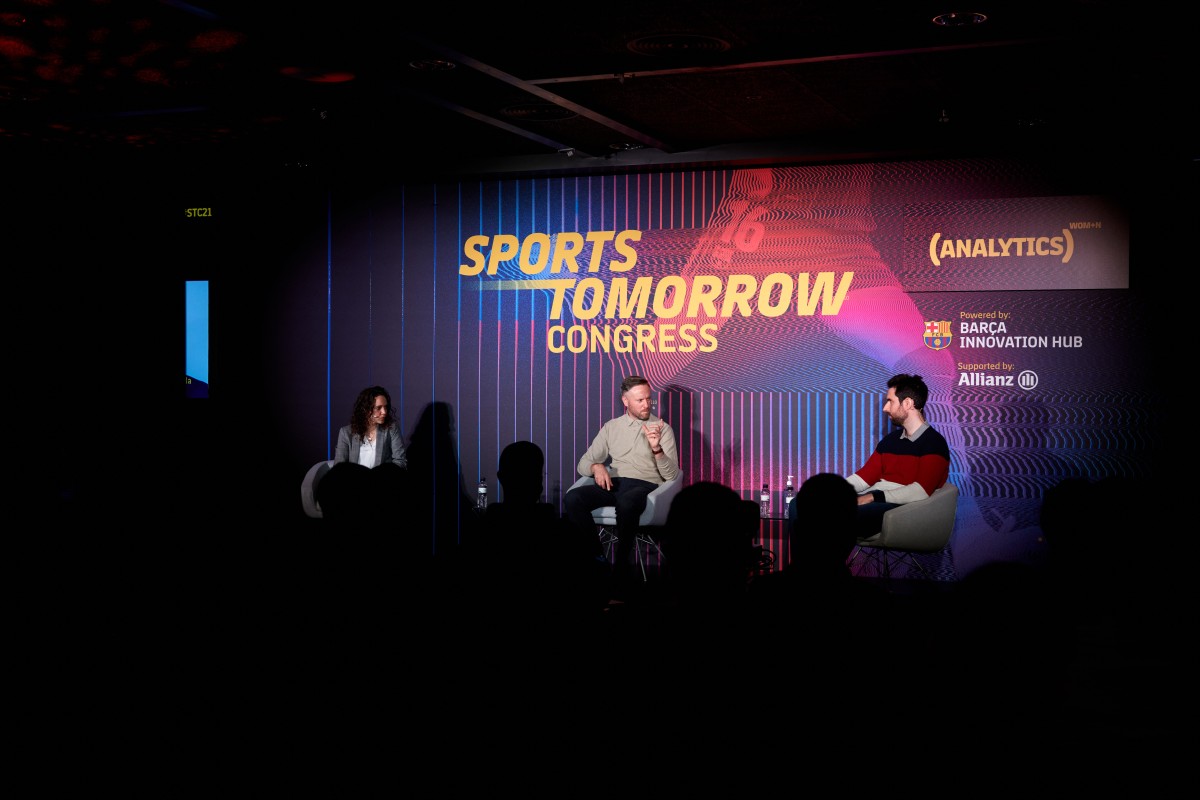
“I’d rather lose readers for not understanding data-driven information than for them to think I’m treating them as stupid.”
It is increasingly common to present data-based information in the media on any type of material, which is done without style manuals, treated as a novelty. The journalists John Murdoch of the Financial Times, Kiko Llaneras of El País, and John Muller of Space Space Space discussed the reactions of readers and the advisable way to present this information. It was suggested at the meeting to exercise caution when using terminology, because it is normal for the public not to understand it. In this sense, Llaneras has proposed informing readers because he believes that they “appreciate it”, in fact, he stated: “I prefer to lose readers for not understanding it rather than treat them as stupid.” In addition, the conflict between old journalism and new journalism is revealed, while the former tends to judge, the data analysis shows facts, but does not imply a judgement per se.
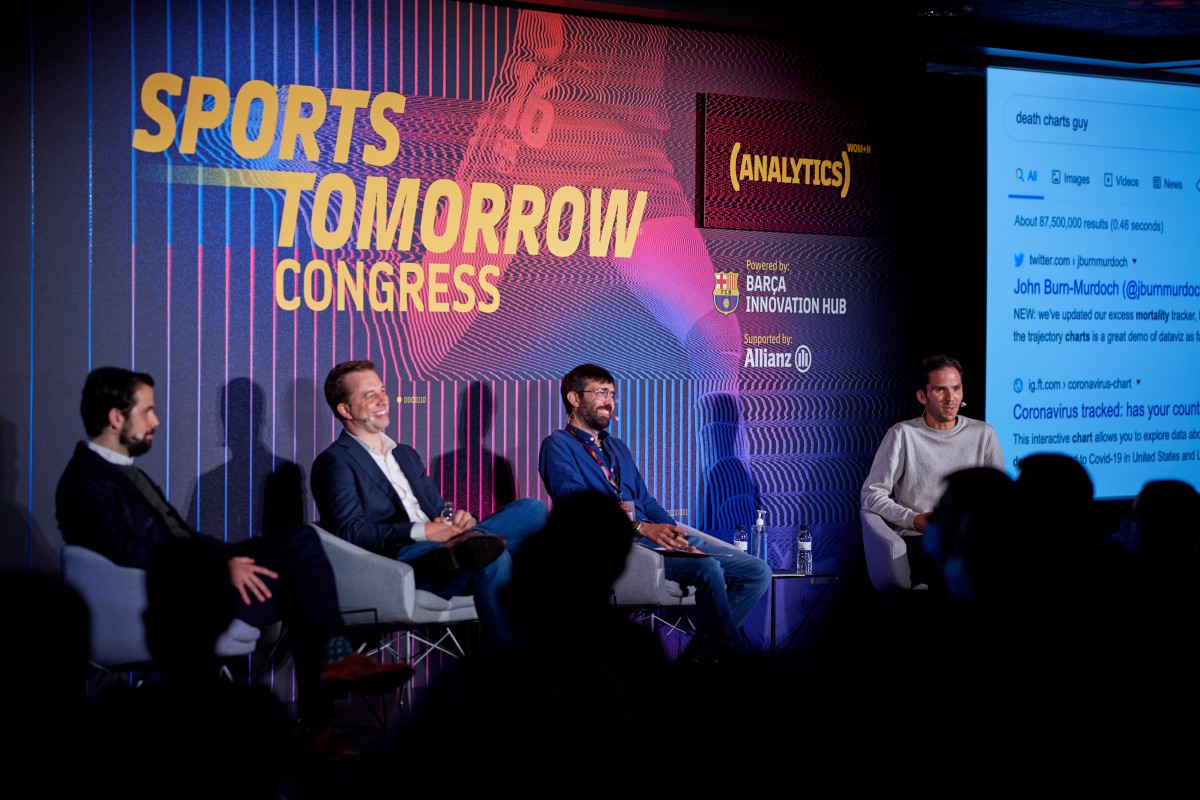
KNOW MORE
CATEGORY: EVENTS
Within the framework of the Sports Tomorrow Congress, Dr. Eva Ferrer, physician of the first female team of the FC Barcelona, and Dr. Gil Rodas, physician in charge of Barça Innovation Hub, they have presented a unique event dedicated to the advancement of the knowledge of female sports.
CATEGORY: EVENTS
Albert Mundet, director of the Barça Innovation Hub, presented the V edition of the Sports Tomorrow Congress, reminding that it is essential to promote the culture of collaboration in the sporting field. These conferences are used to learn about the trends that will transform the world of sports. And this year the central theme of all of them will revolve around the greatest revolution that contemporary sports has known: the incorporation of women into professional categories that were practically reserved for men.
CATEGORY: EVENTS
Sports performance is largely determined by the ability of medical and technical staff to reduce the risk of injury to players and, when they occur, to manage them in the best way possible. Are there differences between men and women when creating a rehabilitation programme?
CATEGORY: EVENTS
Retirement is one of the biggest problems affecting professional female athletes. The salary gap that the female sections suffer does not allow the same proportion of women to finish their career with a secured or resolved future.
CATEGORY: EVENTS
The profile of women’s football is currently rising rapidly, which is helping to boost women’s sport in general. According to Dr Ian Rollo (Gatorade Sports Science Institute), this phenomenon is a resurgence, as in the first decade of the 20th century, women’s football matches attracting more than 55,000 spectators were played in England.
CATEGORY: EVENTS
On a break while preparing their Champions League match against Hoffenheim, the coach of the female FC Barcelona, Jonathan Giráldez, and the players Alexia Putellas and Marta Torrejón have connected with the 5th edition of the Sports Tomorrow Congress of the Barça Innovation Hub on the day dedicated to methodology to explain how they face the most difficult challenge that may exist in the sports competitions: to continue winning after the season.
DO YOU WANT TO KNOW MORE?
- SUBSCRIBE
- CONTACT
- APPLY
KEEP UP TO DATE WITH OUR NEWS
Do you have any questions about Barça Universitas?
- Startup
- Research Center
- Corporate